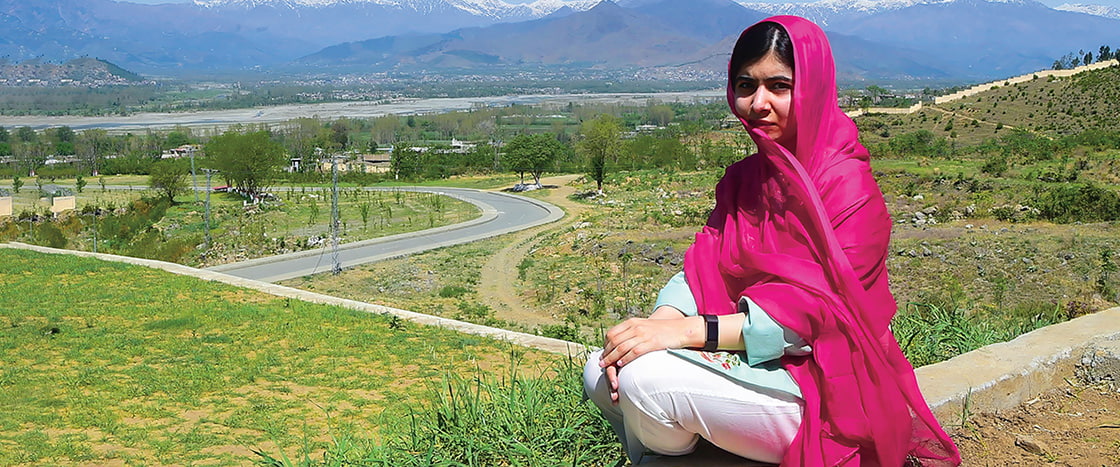October 9, 2012, was an ordinary afternoon in the Swat Valley, an area of towering mountains and green valleys in the country of Pakistan. A smiling girl named Malala Yousafzai [YOO-suhf-zye] was sitting on a school bus with her classmates. The 15-year-old was on her way home when two men boarded the bus.
“Who is Malala?” one of the men demanded.
A feeling of terror filled the air. And then the unthinkable happened: The man shot Malala three times.
Then the men fled.
How could this have happened? Why would anyone want to hurt an innocent girl? Thankfully, she survived to tell her story.
It was an October afternoon in 2012 in the Swat Valley, a place of tall mountains and green valleys in the country of Pakistan. A girl named Malala Yousafzai [YOO-suhf-zye] sat on a school bus with her friends. The 15-year-old was on her way home when two men got on the bus.
“Who is Malala?” one of the men demanded to know.
Fear filled the air. And then the unthinkable happened: The man shot Malala three times.
Then the men ran away.
What had just happened? Why would someone hurt an innocent girl? Luckily, she lived to tell her story.

